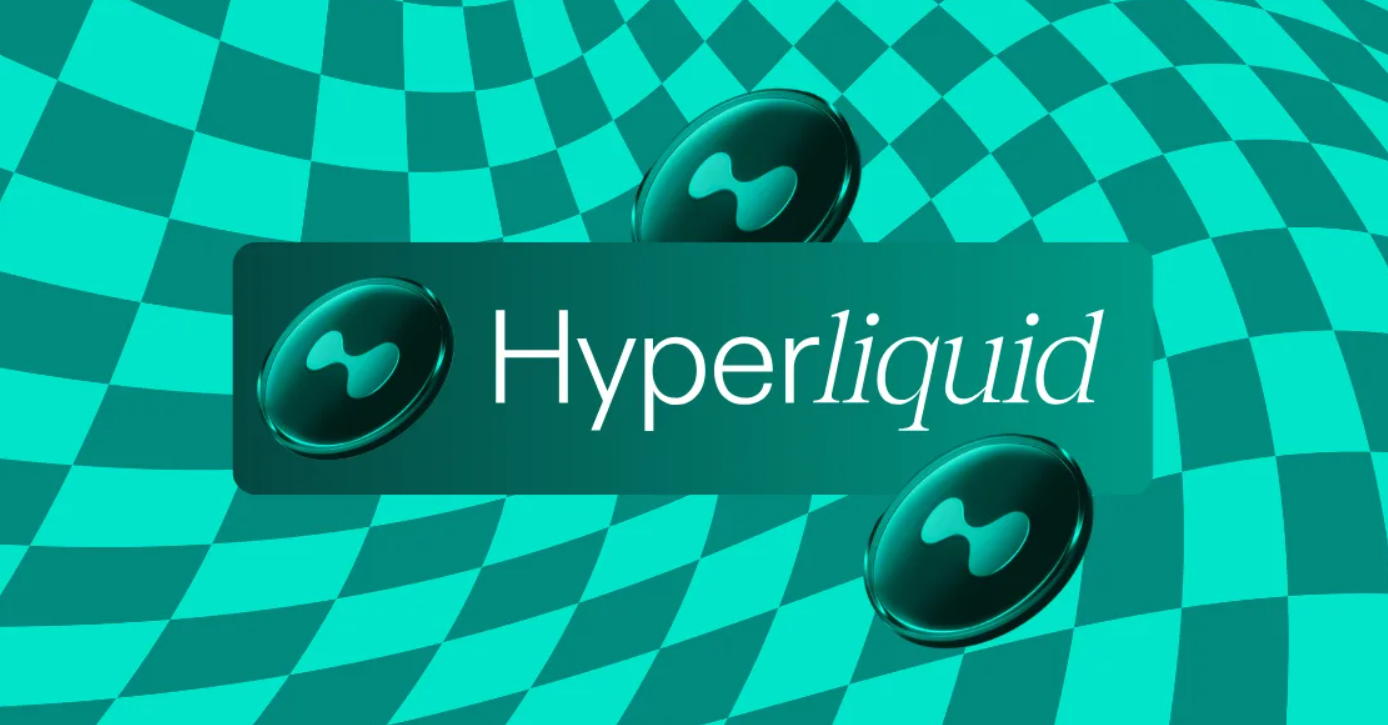Original text: Flo
Translation: Yuliya, PANews
Hyperliquid is a perpetual contract trading protocol built on its own L1 public chain, aiming to provide users with a trading experience comparable to centralized exchanges while offering a fully on-chain order book and decentralized trading functionality. The protocol supports trading in spot, derivatives, and pre-issue markets.
This article will not delve into the specific operational mechanisms of Hyperliquid or its differences from other perpetual contract DEXs. Instead, it will focus on the market opportunities for Hyperliquid and the fundamental investment logic behind the $HYPE token.
As of the time of writing, the trading price of $HYPE has surpassed $20, with a market capitalization reaching $7.5 billion and a fully diluted valuation (FDV) exceeding $20 billion, placing it among the top 30 cryptocurrencies by market cap. So, what factors have driven such strong market performance?
This article will analyze the following four aspects in depth:
- Exchange Development Opportunities
- EVM Ecosystem Opportunities
- Revenue Composition, Valuation, and Industry Comparison
- Potential Risks
Exchange Development Opportunities
Hyperliquid dominates the perpetual contract DEX market, with recent trading volume accounting for over 50%.
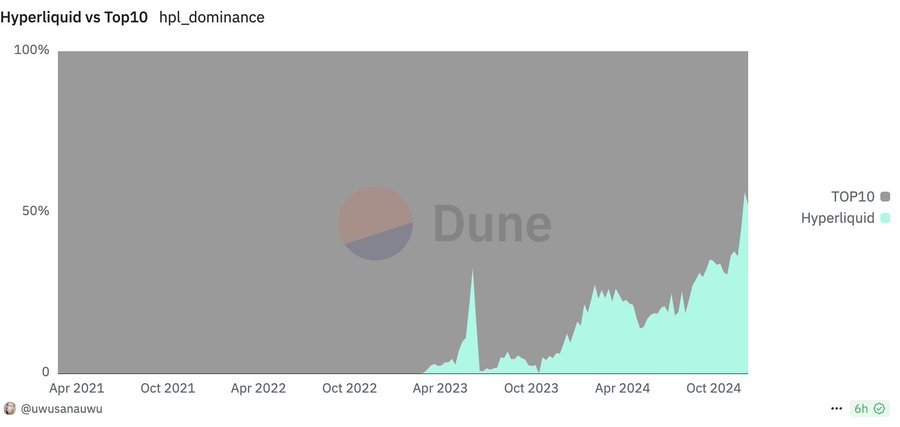
Currently, according to data from Coinalyze and CVI.Finance, its open interest (OI) is about 10% of Binance's. As the bull market deepens and market volatility increases (the cryptocurrency volatility index is only 64), it is expected that open interest, trading volume, funding rates, and liquidation volumes will continue to rise.
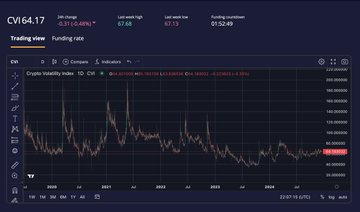
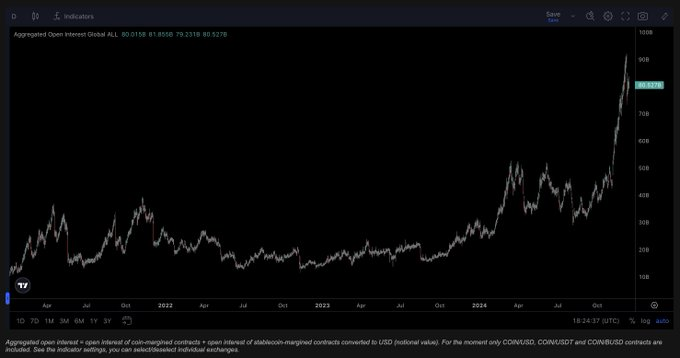
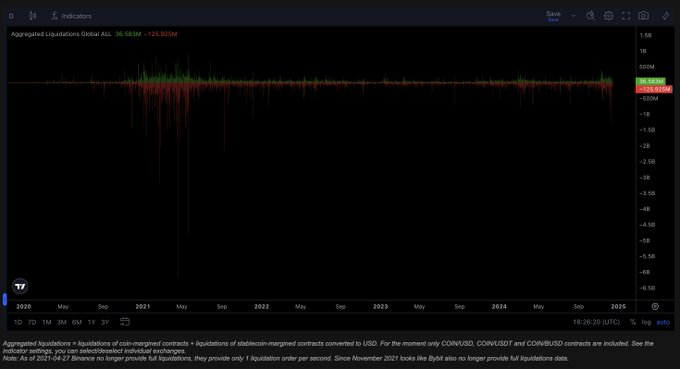
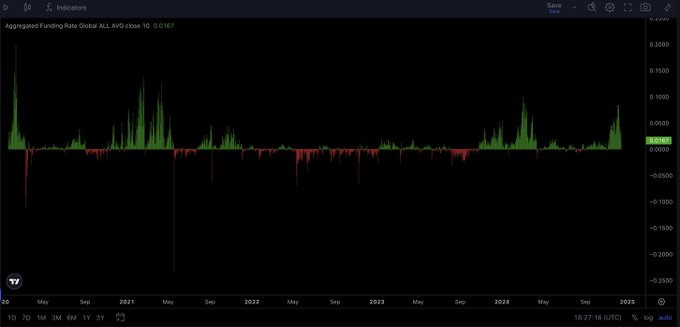
The market share of DEXs in the perpetual contract market is expected to gradually increase, similar to the process by which AMMs and Uniswap drove the increase in DEX market share in spot trading.
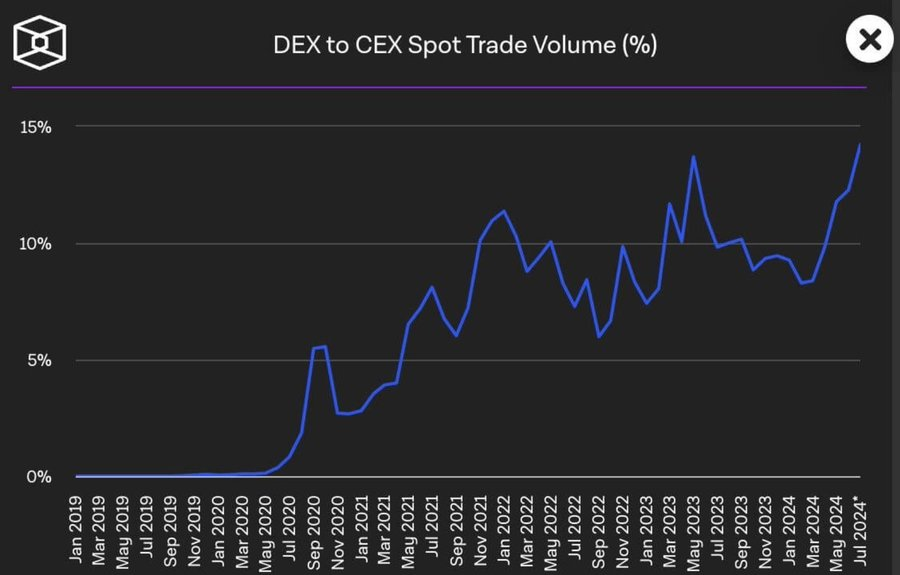
With lower fees than CEXs and more attractive incentive mechanisms, Hyperliquid is expected to attract more users and funds from CEXs. Its token generation event (TGE) and the rapid rise in $HYPE prices can be considered the best marketing campaign.
Although the specific incentive structure has not yet been announced, it is foreseeable that both perpetual contract and spot trading volumes will receive incentives, as over 40% of the token supply is reserved for community rewards.
The initial airdrop situation is as follows:

Now, assuming that 10% of the reserved supply for the first year is allocated for incentives, the situation would be as follows:
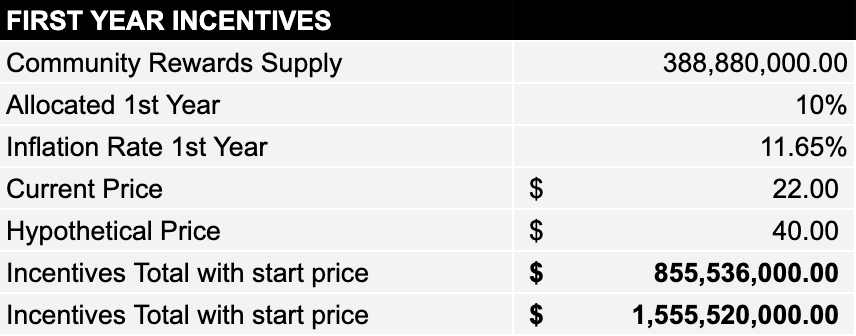
Based on current prices, nearly $1 billion in incentives will be distributed in the first year, exceeding the allocation scale at the initial airdrop price of $2.
This will result in an inflation rate of about 11.65% (including staking rewards). However, as the increase in users brings more trading volume, revenue, token burn, and buybacks, the actual dilution cost may be lower than this level. The team may also adopt a higher inflation rate and incentives to attract users, which is why the fully diluted valuation (FDV) of $HYPE has unique dynamics.
In terms of spot trading, Hyperliquid is expected to become one of the top three spot DEXs in the short term. Yesterday's trading volume was about $500 million, ranking fifth across all chains. As the EVM ecosystem develops, the addition of more utility tokens and native assets will bring richer trading pairs.
With the open infrastructure of Hyperliquid and the emergence of builder codes, trading tools such as Insilico Terminal, Katoshi AI, and pvp.trade have shown promising prospects. This will further improve user experience and attract more capital inflow.
Exchanges and stablecoins are the most profitable businesses in the cryptocurrency space. Hyperliquid's direct competition with mainstream exchanges like Binance, Coinbase, Bybit, and OKX is itself a bullish factor.
In the most optimistic scenario:
- Other exchanges will use Hyperliquid as a decentralized backend
- Exchanges will hedge risks by increasing their holdings of $HYPE
While these scenarios may not be likely in the short term, in the cryptocurrency market, anything is possible.
EVM Ecosystem Opportunities
HyperEVM is an important component of the Hyperliquid ecosystem, sharing a unified state and consensus mechanism with Hyperliquid L1, but operating as an independent execution environment. Among them:
- L1 is a permissioned chain responsible for running core components such as perpetual contracts and spot order books, achieving programmability through APIs.
- EVM is a general-purpose Ethereum-compatible chain that supports standard Ethereum development tools, and smart contracts can directly access on-chain liquidity at the L1 layer.
HyperEVM is planned to launch in the coming months, and many teams have already begun active preparations. Why is this development trend bullish? It is mainly reflected in the following aspects:
New DeFi Ecosystem
Numerous DeFi projects are preparing for the launch of HyperEVM. Mainstream DeFi protocol types, including automated market makers (AMMs), lending platforms, liquid staking, and CDPs (collateralized debt positions), will all go live simultaneously with the EVM launch.
These projects will significantly enhance overall capital efficiency by allowing $HYPE holders to use $HYPE as collateral in lending and currency market protocols. 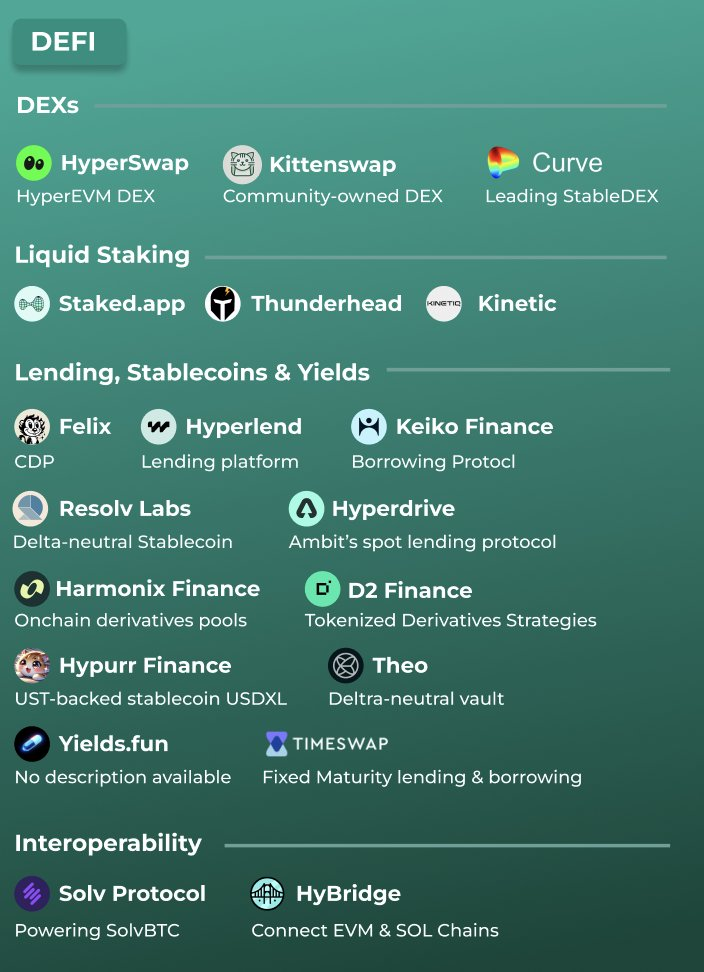
In addition to traditional DeFi protocols, the characteristics of on-chain order book liquidity are likely to give rise to a batch of innovative applications. This provides fertile ground for the birth of new DeFi native protocols, and Hyperliquid is expected to become the preferred platform for these innovative protocols.
Taking Ethena Labs as an example, this project plans to reduce reliance on CEXs by integrating Hyperliquid. This not only enhances system resilience but may also lower and diversify counterparty risk through decentralized hedging processes. This strategy has been discussed in detail in its governance proposals.
Market Demand for Utility Projects
Recent market trends clearly indicate that investors are highly interested in projects with practical application value. This trend is fully reflected in the AI boom on Base and Solana, the excellent performance of Hyena, and the strong demand for $HFUN and $FARM on the Hyperliquid platform.
As the DeFi ecosystem is about to expand, Hyperliquid is likely to become the main battleground for utility investments in the near to medium term. It is worth noting that the AI infrastructure development currently driven by projects like AI16Z and Zerebro on Solana is likely to extend to the Hyperliquid platform.
The native vault function of Hyperliquid is particularly noteworthy. The strategies operating within these vaults can enjoy advanced features similar to DEXs, including liquidation mechanisms for over-leveraged accounts and high-throughput market-making strategies. This mechanism's inclusivity is reflected in that any entity—whether a DAO organization, protocol, institution, or individual—can share in the profits by depositing funds. In return, vault owners can receive 10% of the total profits.
Other Positive Factors for HyperEVM Launch
- Fee Growth Potential: The operation of HyperEVM will generate more fee income, which can be used for staking rewards, token burns, and other purposes. For example, Base generated $15 million in fees in the past 30 days. It is expected that HyperEVM's activity will reach a level comparable to Base in the coming months.
- $HYPE Token Utility Enhancement: The launch of the EVM will significantly expand the use cases of $HYPE within the ecosystem. Users will need $HYPE to pay gas fees, and they can also engage in lending, staking, and locking up to earn yields. These new applications will create stronger buying pressure. The demand for native tokens driven by on-chain activity cannot be ignored, as seen in the meme coin craze on Solana in 2024 and the DeFi and NFT waves on Ethereum in 2020-2021.
- Revenue Growth Pathways: The influx of high-market-cap utility projects, along with the emergence of more native asset bridging options (such as native USDC, spot BTC, SOL, ETH, etc.), will lead to increased spot trading volume, thereby enhancing platform revenue. Additionally, as more projects launch on the EVM, the prices for token code auctions will also rise, bringing extra income to the platform.
- Ecosystem Awareness Enhancement: The launch of the EVM will help Hyperliquid establish its position as a "legitimate" L1 public chain in the market, increasing the exposure of its ecosystem. This may activate funds that are currently on the sidelines.
According to the latest ecosystem market map (which has seen many new projects join since its release last week), Hyperliquid is forming a comprehensive blockchain ecosystem. This complete ecological layout will provide the platform with sustained growth momentum.
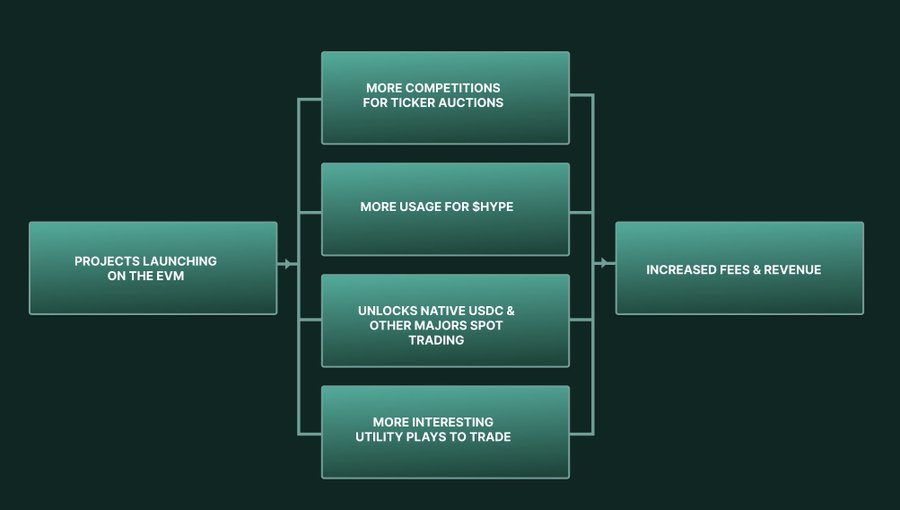
The cumulative effect of these positive factors is expected to bring significant value enhancement and ecological prosperity to Hyperliquid.
Revenue Composition, Valuation, and Industry Comparison
Hyperliquid primarily generates revenue through platform fees and token auctions.
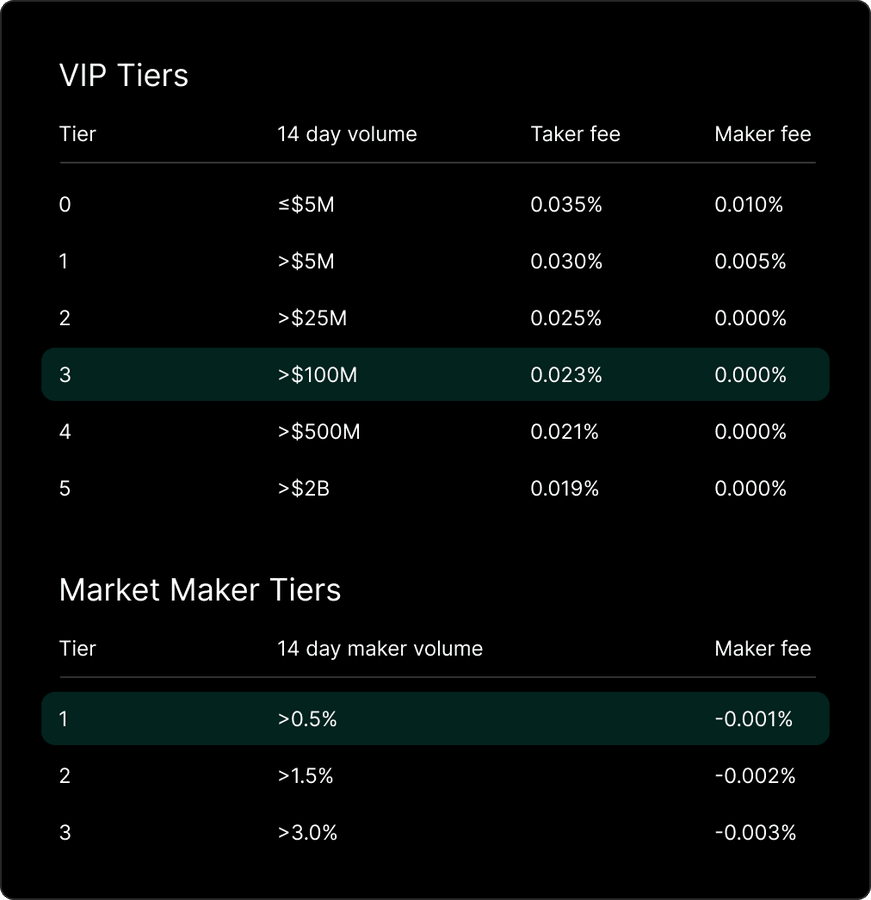
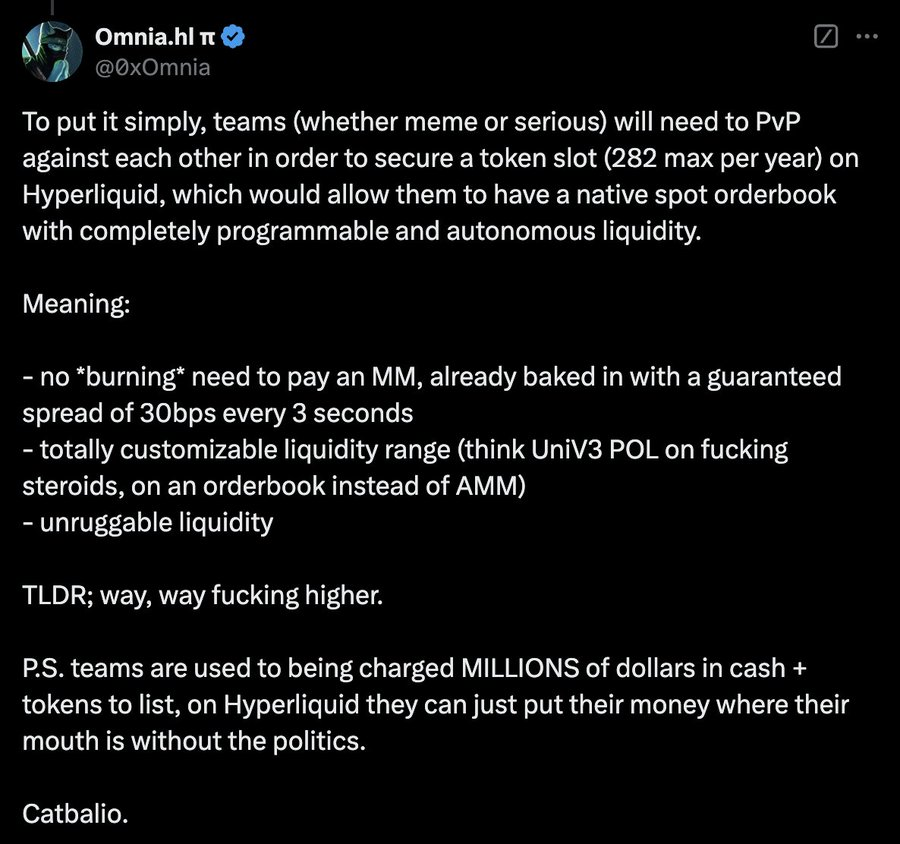
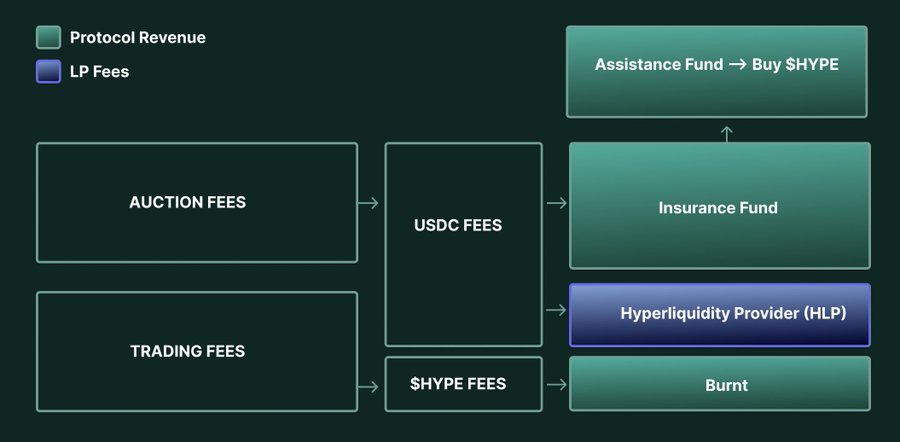
(Current flow of fees on-chain)
Currently, the assistance fund holds approximately 10.76 million $HYPE (over 3% of the circulating supply) and 3.14 million USDC, while the insurance fund has accumulated about 7.07 million USDC awaiting transfer to the assistance fund. A total of over $10 million in USDC may be used for market buybacks of $HYPE.
Recent Performance
In the past 30 days, Hyperliquid generated approximately $26.5 million in USDC revenue, including:
- Token auction revenue of $2 million
- Platform fee revenue of $24.5 million
- An additional burn of about 79,600 $HYPE (valued at $1.75 million)
The annualized revenue exceeds $336 million, ranking just behind Ethereum, Solana, and Tron among all public chains, but with a significantly lower market cap than these public chains. In terms of yield (annualized revenue/circulating market cap), Hyperliquid far exceeds other L1 and L2 chains.
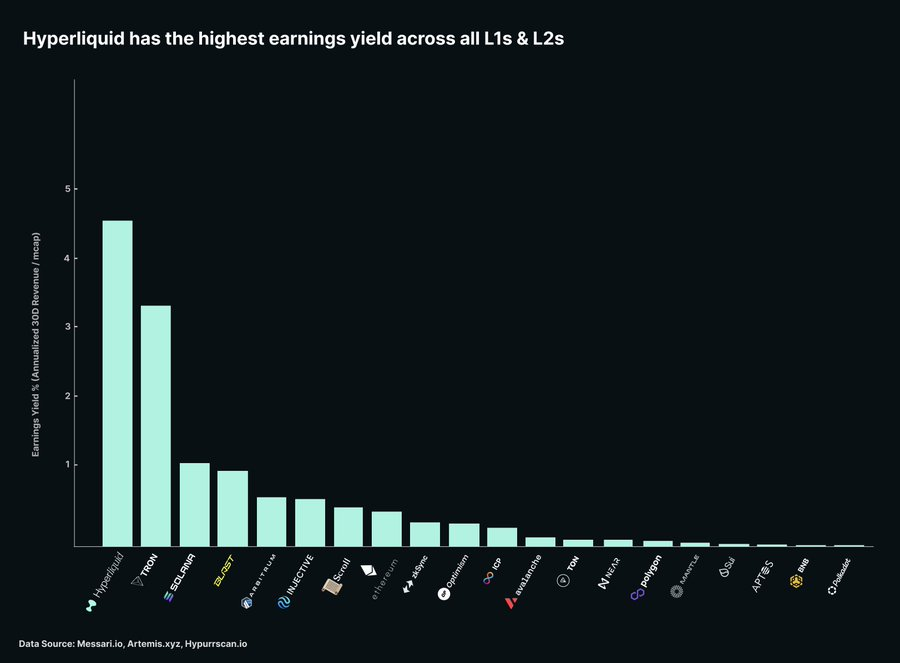

Revenue Growth Potential
Platform Fees: December trading volume has reached November levels, with an expected month-on-month growth of 100%.
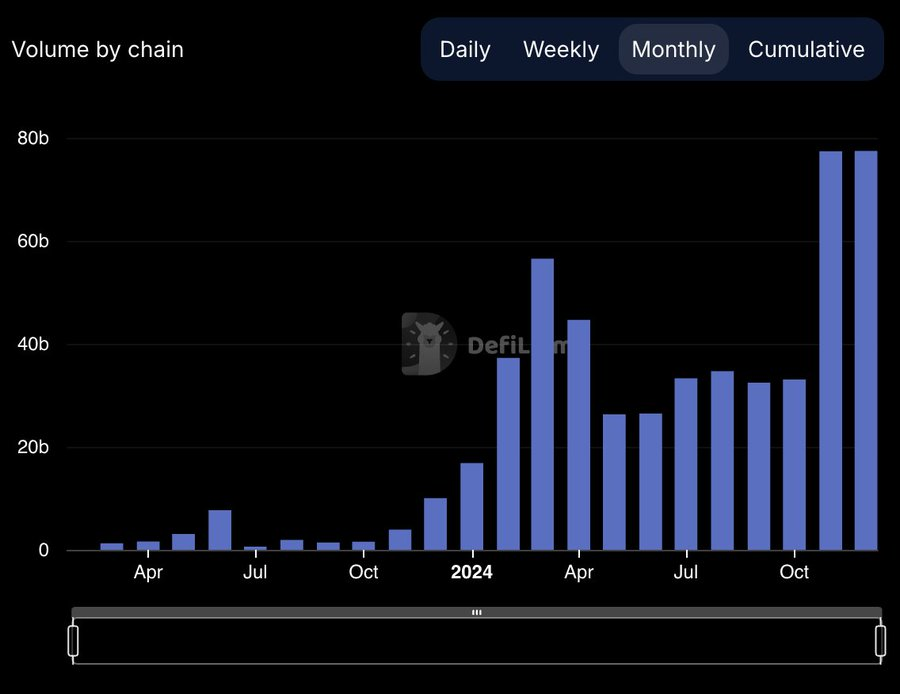
Auction Revenue: The latest round of auction prices is close to $500,000, and as the available slots (282 per year) become more competitive, prices may continue to rise.
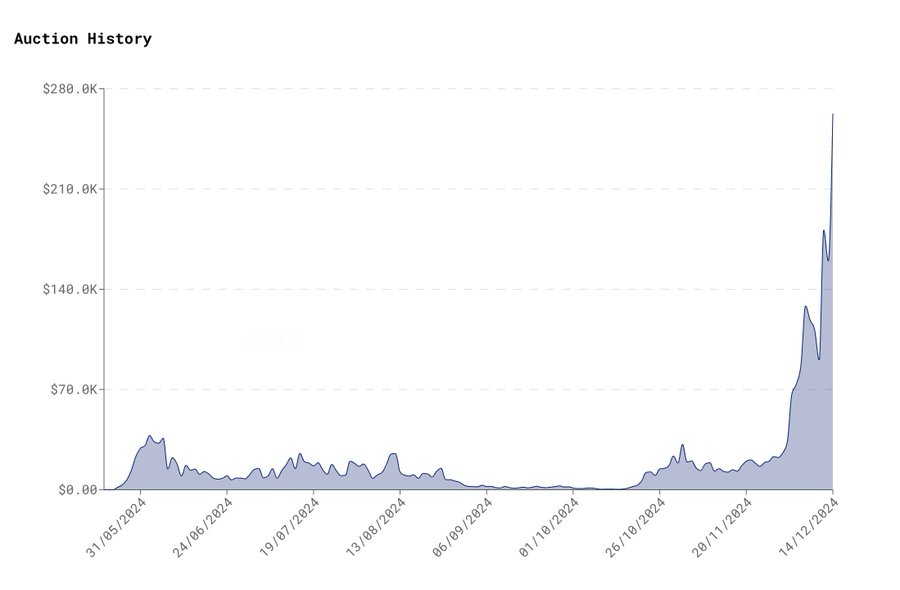
EVM Revenue: Referring to Base's monthly fee income of $15 million, considering that Hyperliquid has surpassed Base's TVL, it is expected to achieve similar or higher economic activity after the EVM launch.
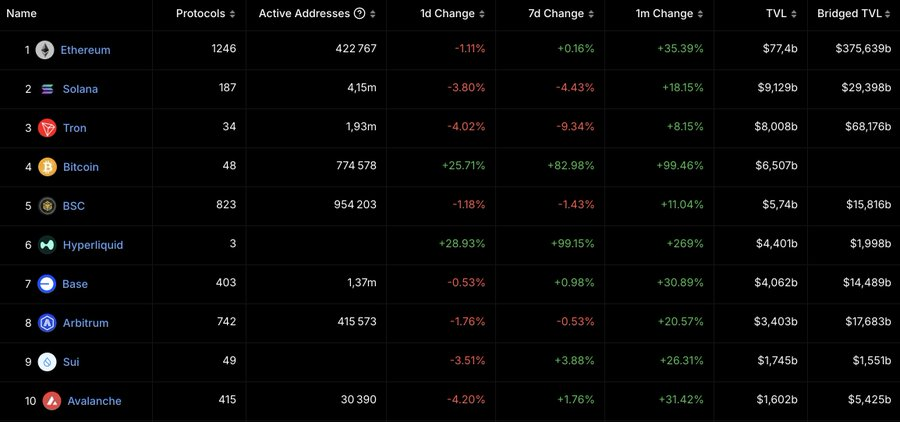
Valuation Scenario Analysis
Base Case Scenario:
- Trading volume increases by 1/3 compared to the past 30 days
- Auction revenue remains stable
- EVM activity is on par with Base
Optimistic Scenario:
- Trading volume doubles compared to the past 30 days
- Auction prices double (to $1 million each)
- EVM activity is twice that of Base
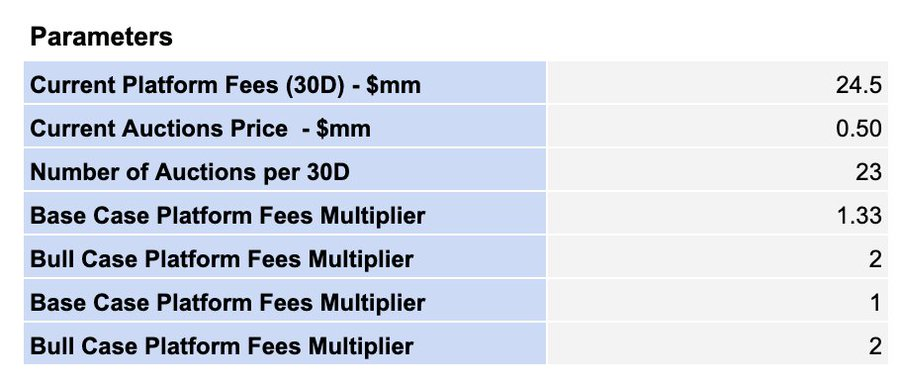

In the base case scenario, 30-day revenue could reach $59 million; in the optimistic scenario, it could reach $102 million. The valuation uses the price-to-earnings multiples of mainstream L1 public chains, combined with annualized revenue for calculation.

Considering the current circulating supply and an inflation rate of 11.6% (used for incentives and rewards), the price range for $HYPE is:
- Base case lower limit: $41.93 (minimum multiple)
- Optimistic case upper limit: $651.48 (maximum multiple)


Reasonable Valuation Analysis
Compared to Solana and Ethereum, the valuation multiple for HYPE should be lower for the following reasons:
- The project is relatively immature
- There are many risk factors
- Revenue primarily comes from DEX, which is different from Solana and Ethereum
"Reasonable" Valuation Reference:
- Using a 40x price-to-earnings ratio
- Annualized revenue of $1 billion (between the base and optimistic scenarios)
- Arriving at a market cap of $40 billion (fully diluted $100 billion)
- $HYPE price of approximately $100
Historical Cycle Comparison
Although a market cap of $40 billion and an FDV of $100 billion may seem high, bull markets can be even crazier.
In the 2021 bull market:
- BNB: $5 billion to $100 billion (20x)
- ADA: $5 billion to $95 billion (19x)
- SOL: $86 million to $77 billion (900x)
- AVAX: $282 million to $30 billion (100x)
- MATIC: $85 million to $20 billion (235x)
FIL's FDV reached $373 billion, which is 16 times today's $HYPE.
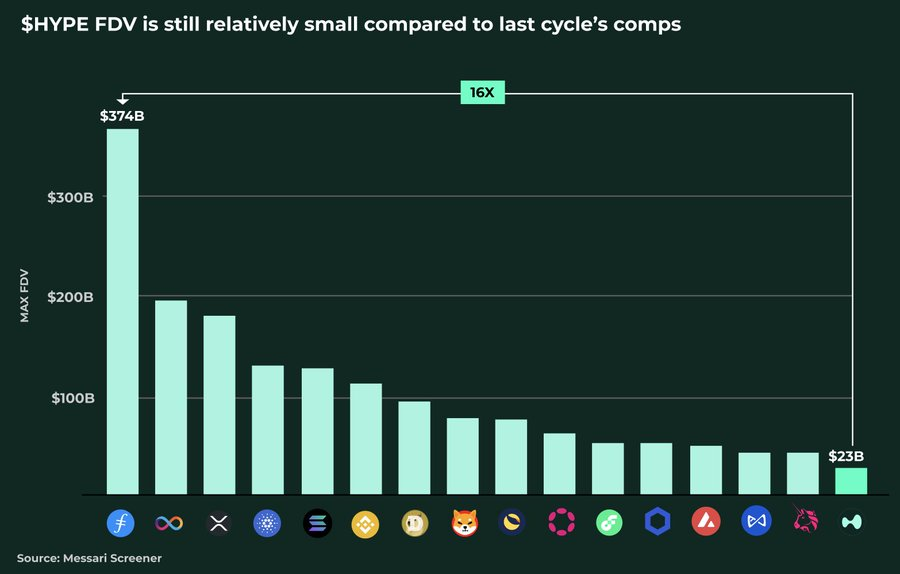
Capital Inflow Potential
Currently, there are about 60,000 $HYPE holders, which is relatively few:
- $KMNO: 55,000 holders
- $WIF: 211,000 holders
- $BONK: 861,000 holders
According to Messari's research on the capital inflow multiplier effect (10x), if it can attract 5% of SOL's market cap and 1% of ETH's market cap (about $10 billion), it will have a significant impact on the price.
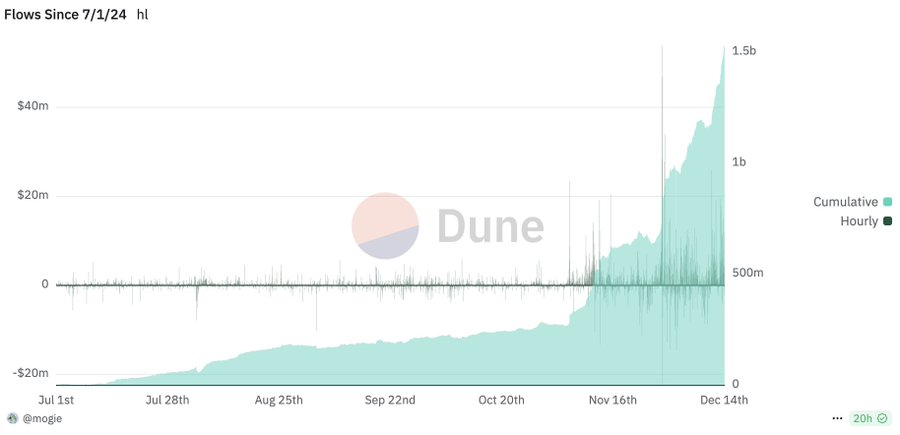
Potential Risks
While this article has made a fairly optimistic prediction about Hyperliquid's future prospects, it is not without risks.
Validator Centralization Risk
Currently, the validator nodes of the Hyperliquid mainnet are still highly centralized, with only four validator nodes operated by the team in Tokyo. Although the testnet has over 60 decentralized validators (including well-known institutions such as Chorus One, ValiDAO, B Harvest, and Nansen), the transition to a decentralized architecture still faces challenges. If the performance of the validators declines, it may affect user experience and trust.
EVM Ecosystem Risks
The quality of the ecosystem will directly impact the development of HyperEVM:
- High-quality projects are needed to maintain ecosystem vitality.
- Low-quality projects or simple copies of other on-chain projects will reduce capital inflow and activity.
- Attracting genuine builders rather than speculators is crucial.
DeFi Innovation Risks
With the launch of the EVM, the capital efficiency of $HYPE will be enhanced through liquid staking, lending, and other methods. New DeFi innovations may bring unprecedented risks:
- The interaction of innovative financial products with the L1 layer may generate unknown risks.
- New DeFi protocols may impact the value of the $HYPE token.
- Exchange operations may also be affected.
Regulatory Risks
Despite the existence of regulatory risks, geographical restrictions and the attitude of the Trump administration have somewhat mitigated this risk. However, as an exchange platform, it is still necessary to closely monitor changes in the regulatory environment.
Market Correlation Risks
As an exchange token, the performance of $HYPE is highly correlated with the overall cryptocurrency market:
- The team needs to complete key milestones before the end of the market cycle.
- Market sentiment fluctuations may significantly impact token prices.
- It is essential to seize development opportunities during bull market cycles.
Investment Reminder
Cryptocurrency investment carries high risks, and any token, including $HYPE, has the risk of going to zero. Investors should:
- Conduct thorough independent research.
- Rationally assess their risk tolerance.
- Not consider this as investment advice.
- Approach market volatility with caution.
免责声明:本文章仅代表作者个人观点,不代表本平台的立场和观点。本文章仅供信息分享,不构成对任何人的任何投资建议。用户与作者之间的任何争议,与本平台无关。如网页中刊载的文章或图片涉及侵权,请提供相关的权利证明和身份证明发送邮件到support@aicoin.com,本平台相关工作人员将会进行核查。
